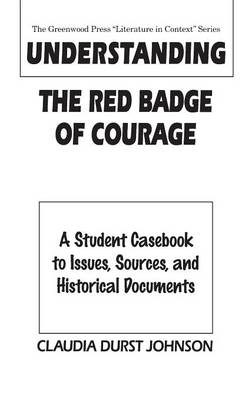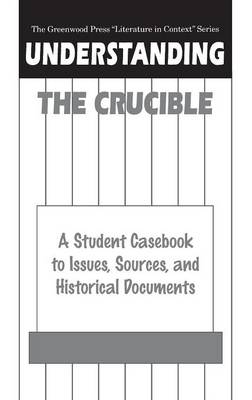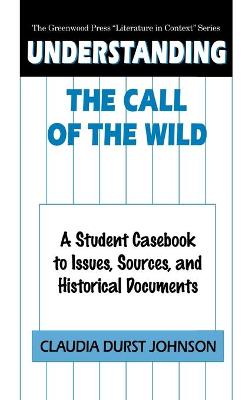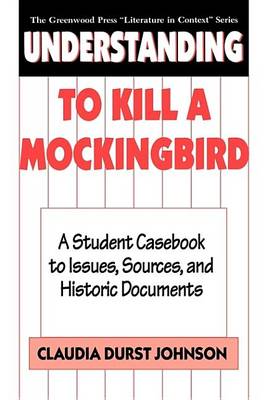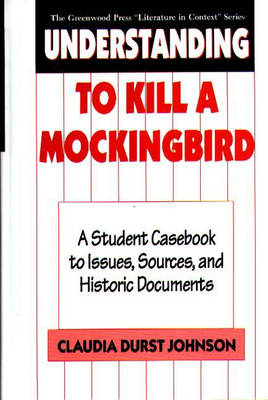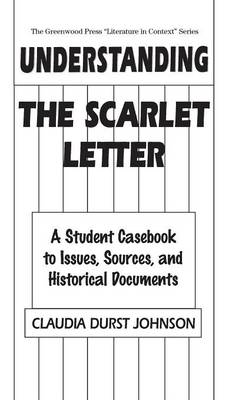Greenwood Press Literature in Context
11 total works
For thousands of years, The Odyssey has resonated throughout the Western world. Homer has been an original source of inspiration to writers, painters, sculptors, and filmmakers, as well as a vital source of information about the mythology, history, and culture of ancient Greece. This casebook uniquely blends commentary and primary documents, situating the epic within historical contexts that are important for students to understand.
The literary analysis chapter is ideal for readers coming to The Odyssey for the first time, introducing the work with a chronology of events and identification of major characters and themes. Topical chapters carefully consider matters of mythology, geography, archeology, and class issues pertinent to The Odyssey. Excerpts from classical and scholarly sources, including Herodotus, Plato, Thucydides, and Bulfinch, help students understand the historical framework, and materials from government documents and newspaper accounts help students make connections betweenThe Odyssey's thematic ideas and current events, such as the September 11th attacks and the ongoing conflict in Ireland.
Since the time of its publication in 1884, Adventures of Huckleberry Finn has generated heated controversy. One of the most frequently banned books in the history of literature, it raises issues of race relations, censorship, civil disobedience, and adolescent group psychology as relevant today as they were in the 1880s. This collection of historical documents, collateral readings, and commentary captures the stormy character of the slave-holding frontier on the eve of war and highlights the legacy of past conflicts in contemporary society. Among the source materials presented are: memoirs of fugitive slaves, a river gambler, a gunman, and Mississippi Valley settlers; the Southern Code of Honor; rules of dueling; and an interview with a 1990s gang member.
These materials will promote interdisciplinary study of the novel and enrich the student's understanding of the issues raised. The work begins with a literary analysis of the novel's structure, language, and major themes and examines its censorship history, including recent cases linked to questions of race and language. A chapter on censorship and race offers a variety of opposing contemporary views on these issues as depicted in the novel. The memoirs in the chapter Mark Twain's Mississippi Valley illuminate the novel's pastoral view of nature in conflict with a violent civilization resting on the institution of slavery and shaped by the genteel code of honor. Slavery, Its Legacy, and Huck Finn features 19th-century pro-slavery arguments, firsthand accounts of slavery, the text of the Missouri Compromise of 1820 and the Fugitive Slave Law of 1850, and opposing views on civil disobedience from such 19th- and 20th-century Americans as Ralph Waldo Emerson, Stephen A. Douglas, and William Sloane Coffin. Nineteenth-century commentators on the Southern Code of Honor and Twain's sentimental cultural satire directly relate the novel to the social and cultural milieu in which it was written. Each chapter closes with study questions, student project ideas, and sources for further reading on the topic. This is an ideal companion for teacher use and student research in English and American history courses.
Herman Melville is best known as the author of Moby-Dick, but most students first become acquainted with his works by reading Bartleby the Scrivener and Billy Budd. This reference locates these two works in their economic, social, and cultural contexts and relates them to contemporary issues. Through insightful literary and historical commentary and a generous selection of primary documents, this companion locates Bartleby the Scrivener and Billy Budd in their economic, social, and cultural contexts. The first part of the book discusses Bartleby, while the second examines Billy Budd. Each section includes chapters on specific issues, accompanied by a wide range of documents. These include the will of John Jacob Astor, 19th-century newspaper articles, excerpts from the works of Charles Dickens and other writers, and modern historical, psychological, and political works, including the Patriot Act. The volume relates Melville's works to contemporary social concerns, lists works for further reading, and suggests topics for papers and classroom discussions.
Every generation of readers has interpreted the meaning of The Red Badge of Courage anew. Its appeal is both historical and universal-historical in its Civil War setting and universal in its relating of the experiences of a young man who is thrust into a situation he does not understand and cannot cope with. This collection of historical documents, collateral readings, and commentary will promote interdisciplinary study of the novel and enrich the reader's understanding of its themes and historical context. A wide variety of more than 40 primary documents and firsthand accounts brings to life the Civil War experiences of leaders and soldiers of the Union and Confederacy, especially in the Battle of Chancellorsville, which is the setting for the novel. Carefully selected memoirs, poems, short stories, newspaper articles, and interviews illuminate the historical setting, the themes of cowardice and desertion, battlefield experiences, the soldier's life in camp, and the issue of pacifism as it relates to The Red Badge of Courage as an antiwar novel.
Many of these documents appear in print here for the first time. The documents include: memoirs of Civil War generals at Chancellorsville who were in marked disagreement with one another, remembrances of cavalry and foot soldiers, poems by those who experienced the war, short stories by Civil War veterans, a series of newspaper articles on World War II veterans who experienced Post-Traumatic Stress Disorder, The War Prayer by Mark Twain and The Wound Dresser by Walt Whitman, poems and a short story by Stephen Crane, and an interview with a conscientious objector in World War II. Each section of this casebook contains study questions, topics for research papers and class discussions, and lists of further reading. A selection of photos and a map complete the work. This is an ideal companion for teacher use and student research in interdisciplinary, English, and American history courses.
Ideal for student research and class discussion, this interdisciplinary casebook provides a rich variety of primary historical documents and commentary on The Crucible within the context of two relevant historical periods: the Salem witch-trials of 1692 and the Red Scare of the 1950s, when the play was written. The play is a testimony to the inherent dangers Miller sees in any community seized by hysteria. The Salem witch-hunts, which Miller uses to illustrate such a community, were echoed more than 250 years later in the hunt for subversives during the Red Scare of the 1950s. The authors provide literary and dramatic analysis of the play, comprehensive historical backgrounds, relevant documents of the periods, and questions and projects to help students in their understanding of The Crucible and the issues it raises.
In a discussion of Puritan society of the seventeenth century, the authors explore the habits of many of the residents of Massachusetts Bay and specific events which seemed to make the witch-hunts of 1692 inevitable. The text of relevant documents illustrate their beliefs, combined with the disasters that contributed to community hysteria. A chapter on the Salem witch trials includes testimony, letters, and first person accounts by actual people on which Miller based his characters. A chapter on the Red Scare of the 1950s features testimony before the House Un-American Activities Committee, case studies of blacklisted people, and an exclusive interview with a couple who were blacklisted. The authors include a chapter on witch-hunting in the 1990s in the form of testimony from preschoolers which sent child care workers to prison on charges of sexual abuse. Students will be able to compare and contrast witch- hunting over 300 years with the materials provided here, many of which are available in no other printed form. Each section of the casebook contains study questions, topics for research papers and class discussion, and lists of further reading for examining the issues raised by the play.
London's adventure tale The Call of the Wild explores the complex relationships between man and nature, and animals' struggle with their own nature in man's world. In this interdisciplinary study, a rich collection of primary documents point out the many issues that make this story as poignant and pertinent today as when it was written nearly a century ago. Compiled here for the first time is documentation from sources as varied as century-old newspaper accounts, legislative materials, advertisements, poetry, journals, and other startling firsthand accounts. The story's historical setting, the Yukon Gold Rush, is brought vividly into focus for readers, with firsthand accounts of the unimaginable hardships faced by the prospectors in the Klondike and Alaskan Gold Fields. Central to their story and to their very survival were the dogs that served man's ambitions. Tribute to the sled dog is given in an historical 1879 piece The Value of Dogs from the Sketches of Life in the Hudson Bay Territory. This casebook also investigates endangered species legislation and the history of animal welfare concerns, focusing on the treatment of dogs in particular, surveying over a century of public sentiment.
Students are introduced to The Call of the Wild with an insightful literary analysis exploring a mythological interpretation and a discussion of its main thematic premise, the fundamental struggle for freedom. Each subsequent chapter of this casebook focuses on an important topic, such as animal welfare, contextualizing these issues with primary documents. Students will find these materials and the related essays invaluable in understanding not only The Call of the Wild but also the historical and pertinent social issues it addresses. Each topic section of this casebook offers ideas for thought-provoking class discussions, debates, and further research. Suggestions for further reading on these topics are also given.
To Kill a Mockingbird is a novel of such profound power that it has affected the lives of readers and left and indelible mark on American culture. This rich collection of historical documents, collateral readings, and commentary captures the essence of the novel's impact, making it an ideal resource for students, teachers, and library media specialists. Drawing on multi-disciplinary sources, the casebook places the issues of race, censorship, stereotyping, and heroism into sharp perspective. Through these documents, the reader also gains a taste for the historical events which influenced the novel as well as the novel's relevance in today's world. Among the documents which speak most eloquently are testimony from the Scottsboro Case of the 1930s, memoirs and interviews with African Americans and whites who grew up in Alabama in the 1930s, and news stories on civil rights activities in Alabama in the 1950s. Most of the documents presented are available in no other printed form. Study questions, project ideas, and bibliographies are also included for ease of use in further examination of the issues raised by the novel. Thirteen historical photographs complement the text.
Following a literary analysis of issues raised by the novel, the casebook opens with testimony and newspaper articles from the 1930s Alabama Scottsboro Case. The significant parallels of this case to the novel paint a social and historical background of the novel. Memoirs and interviews with African Americans and whites who grew up in Alabama in the 1930s further complete the historical landscape. Articles and news stories from the 1950s depict the increasingly tense, volatile environment in which the novel was written and published. Documents examine the stereotypes of the poor white, the African American, and the southern belle; and how the novel allows the reader to walk around in the shoes of those who have been stereotyped. More current articles examine the legal, literary, and ethical ramifications of the novel. These articles include a debate between lawyers over whether Atticus Finch was a hero, and discussion of attempts to censor the novel.
Sexual misconduct of society's leaders, the plight of single mothers, the separation of church and state - all are burning issues of the 1990s which sparked outrage and controversy 150 years earlier in The Scarlet Letter. Now, no study of American history is complete without thorough examination of Nathaniel Hawthorne's timeless masterpiece. This multidisciplinary study of the novel contains historical documents, collateral readings, and commentary. In short, it is the ideal companion for students who wish to fully understand the novel in the context of its time, and to unlock its current relevance. Among the materials are original 17th-century documents that illuminate Puritan attitudes and bring the Salem witchcraft trials to life, private journals, historical reports, 19th-century magazine articles, sketches, and newspaper stories. Many of the documents are available in no other printed form. Not only do these materials provide a taste of 17th-century Puritan culture, but they also glimpse into Hawthorne's mind as he comes to terms with his witch-hunting ancestors and his vocation. Most importantly, this casebook contemplates the many issues raised by The Scarlet Letter which inextricably link the 17th-century Puritans to the 19th century culture of Hawthorne to the present. Each section of this casebook contains study questions, topic ideas for written or oral expression, and lists of further readings for examining the issues raised by the novel. Designed as a resource for students, teachers, and library media specialists, the volume is cloth bound and printed on high quality acid-free paper, making it an excellent addition to every library collection.
A literary analysis focusing on the issues raised by the novel opens the casebook. In Part Two, the Puritan's code of crime and punishment and the basic tenets of their belief are analyzed through original 17th-century diaries, letters, and testimony from the Salem witch trials. Part Three examines the novel's introductory essay, the autobiographical The Custom House, which finds Hawthorne grappling with the role his ancestors played in persecuting the Quakers and the Salem witches, as well as his own internal conflict over his vocation as a fiction writer. The moral attitudes at the time of Hawthorne's controversial work are also examined through reviews published at the time of publication. Part Four draws connections between two issues raised by the novel - the unwed mother and the lapsed minister - that remain controversial today and features recent news articles on these issues. A glossary of terms and a topic and person index complete this latest addition to Greenwood Press' Literature in Context series.


